Rugged, Easy to Carry, and Boasting Solid Color Attributes, These LEDs Are Ready for On-the-Go Shooting
The benefits of LED lighting are indisputable and well established, as modern units are capable of outputting near-equivalent tungsten intensity while consuming only 10% of the power. For film and video makers, LED’s low energy draw and minimal heat allow sets to remain cool and comfortable for actors. The various types of gel we use most, especially the saturated blues (CTB), last much longer, and the LED lights themselves are able to maintain a constant look over many years of use. Moreover, the low heat from LED lighting has enabled a nifty new range of ruggedized accessories like Dopchoice’s Snapgrid and Snapbag [covered previously]. The low power draw is particularly crucial in areas of the world where adequate mains power is always an issue. In Dhaka, Bangladesh, for example, television studios are limited to three hours of power per day.
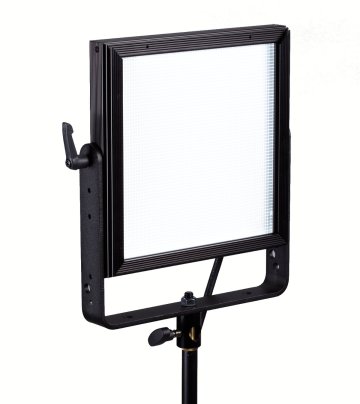
The LitePad Vector CCT features surprisingly good color saturation in the red wavelengths, perhaps reflecting a tradeoff of some intensity in exchange for more accurate color. Manufactured in Canada (not China), the Vector offers a welcome respite from the flood of cheap LED lighting currently inundating the market.
The Rosco LitePad Vector CCT is a convenient, ruggedly manufactured 8-inch-by-8-inch LED offering significantly better-than-average performance, especially in the tungsten wavelengths where many LEDs tend to struggle. The Vector produces good red saturation for smoother skin tones. However, at only 2/3 the size of the typical 1×1, the LitePad Vector produces considerably less punch, making it less suitable for use as a key light through a Chimera.
Still, the size and convenience of the LitePad Vector are very compelling. Configured practically and compactly in a two-light Pelican backpack with room for simple accessories, the diminutive Vectors are easy to transport. In other words, this is gear you are likely to reach for and actually use and not leave at home.
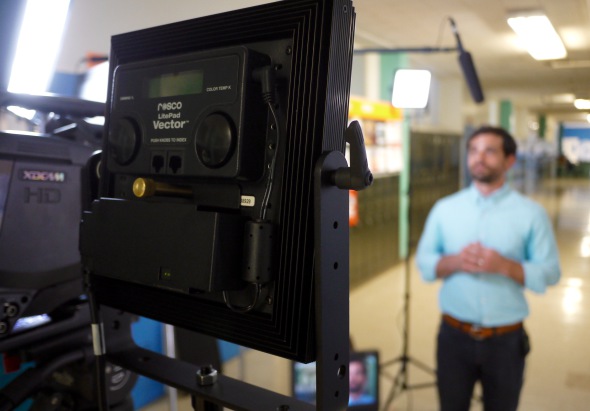
Despite the Vector’s reduced intensity compared to a full-size 1 x 1 like the Litepanels Astra, the character of light is superb, making the Vector well suited as a side or backlight for interviews and standups.
Larger and more powerful LED 1x1s from Litepanels and others may offer greater versatility once ensconced on a set and punching through multiple layers of diffusion, but let’s not forget the hassle ordeal of transporting the gear in the first place, which can also be pricey if it means additional checked bags at the airline counter.
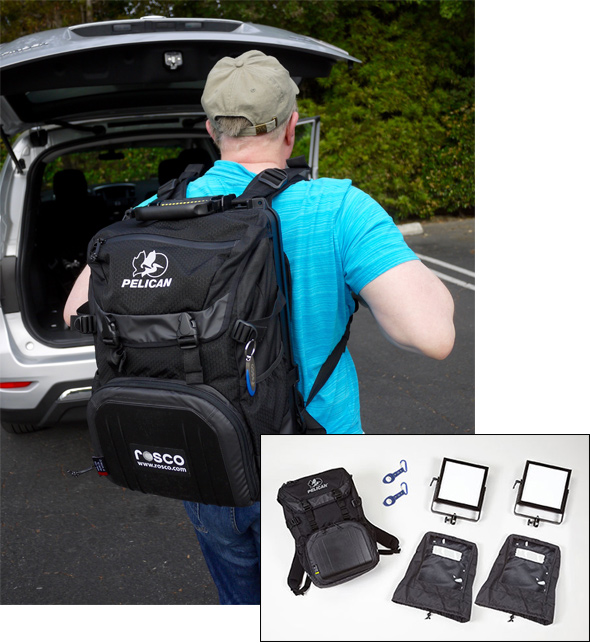
The LitePad Vector backpack kit is lightweight and compact, which means this is gear you can transport easily and actually use on job after job. A three-light kit is also available in a traditional case configuration.
Notwithstanding the Vector’s reduced size and weight, the mini-array LED is rugged enough to withstand the rigors of regular professional use. The unit is also very well designed. The baby stand-fixing bolt is spring-loaded to minimize fumbling and the risk of loss in transport. The Vector’s heavy-duty protective storage bag also serves as an effective rain cover with translucent panels protecting the main controls.
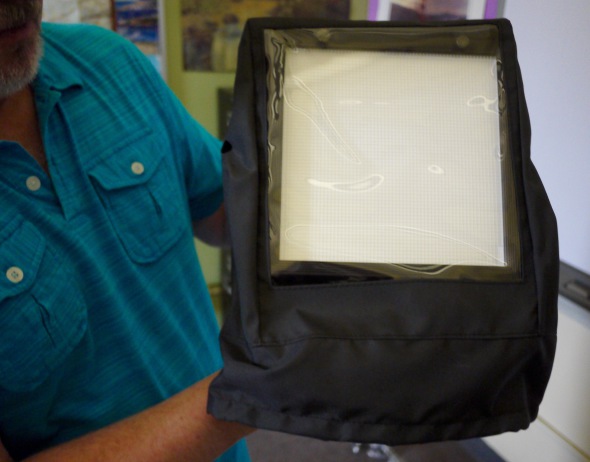
The Vector’s heavy-duty protective sleeve doubles as an ingenious rain cover, making the light suitable for outdoor use in a wide range of weather conditions.
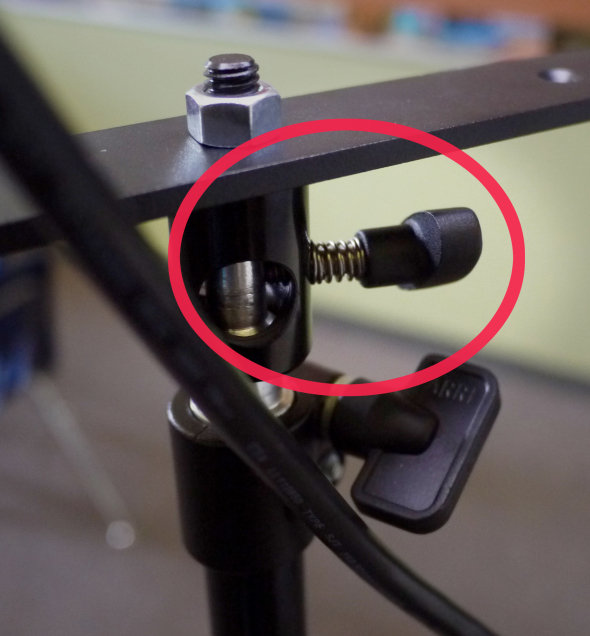
The spring-loaded fixing screw reduces needless fumbling and the possibility of loss in transit.
Carabiners may be attached to the outside of the light for hanging a water-bottle weight to increase stability on uneven surfaces. The great itinerant cinematographer Ross Lowell pioneered the use of such solutions in his lightweight travel kits circa 1960, and it’s nice to see this same simple approach applied in a modern context.
The LitePad Vector CCT (the industry’s acronym for correlated color temperature) features a Color Rendering Index CRI of 93 in daylight, with a slightly reduced CRI of about 88 at the low end of its color temperature (tungsten) range, 3000º K. (The CRI scale runs from 1 to 100 and reflects the ability of a light to reproduce colors faithfully in comparison to a natural daylight source used as a benchmark.) This performance level is consistent with the latest advances in LEDs, as CRI ratings of 90+ have become more or less the norm these days in professional lighting. Of course, no LED can yet match the smooth color output of true tungsten light, but modern LEDs like the LitePad Vector CCT continue to move ever closer with each new generation of lighting, with all the concomitant economic and practical benefits in the meantime.
Accordingly, Rosco, which knows a thing or two about color correction gels, offers an optional gel set for use with the Vector. The pack includes a Soft Amber #9211 gel, which can be useful with LEDs like the Vector to reduce the splotchy effect that may appear in Caucasian skin. Conversely, when capturing subjects with dark skin or complexions, the dichroic effect can often impart a green-blue cast. In such cases, a 1/8 or 1/4 Minus Green gel may be used to attenuate the unwanted color shift.
While LED lighting is compelling for a variety of reasons, one major disadvantage of broad array-type instruments like the LitePad Vector is the inherent lack of beam control. The shaping of the instrument’s beam can be inconvenient, usually requiring a bevy of unwieldy C-stands and cutters to corral the uncontrolled spread. The Vector’s optional, inexpensive egg-crate accessory can help reduce the need for traditional cumbersome grip stands and flags.
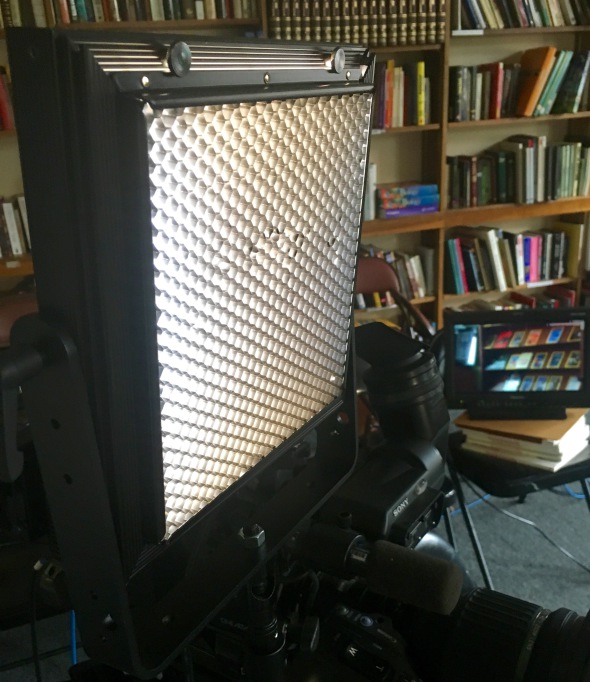
An optional egg crate helps reduce the need for dragging unwieldy C-stands and flags to a location.

For portable applications, Gold- or V-Mount batteries may be fitted to the Vector via optional cheeseplate adapters.
The LitePad Vector CCT is a rugged and professional high-performance LED that fits a certain niche, especially for shooters on the go in the documentary, nonfiction, and ENG arenas. Rising above the morass of LED lighting from a myriad of manufacturers, the Vector may not be the priciest or most powerful LED array on the market. It’s just the one you’re most likely to use — and use well.
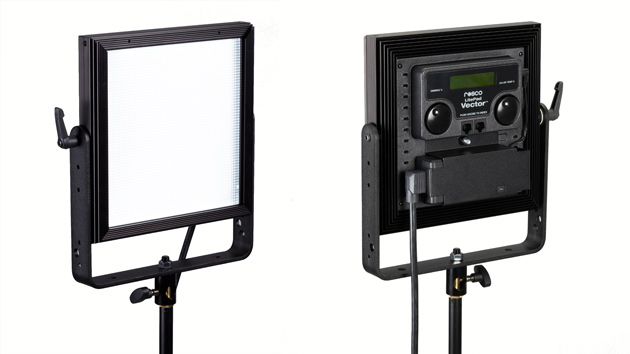










Leave a Reply